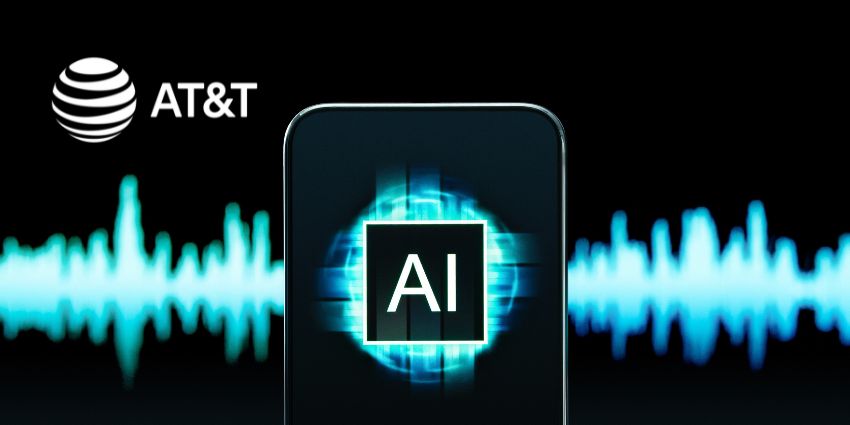The modern workplace consists of many employee personas. For companies to empower and engage every team member, they need to understand the different ways in which professionals operate. Alongside the traditional office worker, business leaders must now support many remote, hybrid, and frontline employees.
Unfortunately, while many companies are developing new strategies to assist their versatile and distributed teams, the frontline worker is often overlooked. Around 17% of frontline workers say they never connect with their head office, despite their importance to businesses. Frontline workers are often the face of an organisation and crucial to productivity and, therefore, success. It’s crucial that they are empowered to be as efficient as possible as they drive customer experience.
So, how do companies keep frontline workers connected to the wider business? The right strategies, technologies, and processes can make all the difference.
Step 1: Invest in Collaborative Tools
Perhaps the most effective way to engage frontline employees and ensure they maintain a strong link with all of their colleagues is to invest in the right collaboration tools. Collaboration platforms are quickly emerging as the new “hub” of work in an environment where employees often operate across distributed landscapes in remote, hybrid, and frontline settings.
Collaboration tools allow companies to access new methods of connecting with their colleagues, sharing information, and collecting knowledge through the cloud. Around 80% of employees in all business positions use collaboration tools to maintain high levels of productivity and customer service.
Many team collaboration tools on the market today can also include specific apps, add-ons, and features specially designed to support frontline workers. Some have their own “push to talk” options for walkie-talkie-style conversations. They can even work alongside scheduling and workforce management tools to help business leaders gain insight into where team members are at any given time. Plus, these solutions ensure every frontline worker can take part in crucial meetings, conferences, and company discussions.
“At Spectralink we’ve really taken to heart the plight of frontline workers. Our experience alongside our channel partners on the field showed us there was an important gap in the level of service and collaboration provided to desk-based workers and their counterparts on the shop floor, in the factory or warehouse,” said Julien Bertheuil, Managing Director EMEA at Spectralink Corporation.
“This is what led us to develop a native Microsoft Teams integration with all our DECT handsets in early 2022.
“Frontline worker are now able to access the same collaboration tool as their colleagues, driving productivity and improving, customer service and job satisfaction.”
Step 2: Support Multiple Forms of Communication
Part of keeping frontline workers connected to the wider business environment understands how they prefer to communicate with colleagues and business leaders. Not every frontline worker will be able to sit down and type out an email, particularly if they’re using a smartphone as their main device. They may prefer to access different methods of communication, like SMS, instant chat, video, and fast-paced audio calls.
A good way for business leaders to ensure they’re enabling and empowering their frontline workers is to ask them about their communication preferences. Pay attention to how frontline staff prefer to interact with their colleagues with analytics and adoption insights, and ensure staff have a range of ways to get in touch.
It’s also worth making sure business leaders are aware of the communication preferences of their teams when they’re planning meetings and crucial discussions. While a full video conference may be difficult for frontline workers to attend from a PC, they should be able to dial in using any device they may have.
Step 3: Invest in the Correct Hardware
Speaking of devices, frontline workers can’t stay connected to their teams if they don’t have the correct hardware. DECT and Wi-Fi phones are often essential for frontline workers who need to stay connected and in tune with their colleagues wherever they are. However, it’s important for business leaders to make sure they’re investing in the right solution for their teams.
The ideal device will adhere to the specific needs of the frontline worker, offering enhanced durability for the construction sector, hygiene features for healthcare, and so on. Additionally, these tools should also allow employees to easily access the software systems and collaboration tools they’re already using at the press of a button.
For instance, a DECT device certified for use with a specific team collaboration tool might come with a convenient button a user can press to immediately join a meeting or access their directory. The right tools should make it easier for frontline workers to effectively leverage the same unified communication and collaboration tools accessed by any other employee.
Step 4: Improve Transparency
Just like remote workers, frontline workers can often feel disconnected and isolated from the rest of their team when they’re consistently outside of the office. Part of making sure the frontline workforce is not just connected to the rest of the business but also engaged in creating new policies for how information is transparently shared with all teams.
Companies should be investing in solutions which allow frontline workers to access the same organisational knowledge as their peers, wherever they are. Team members should have access to mobile-friendly knowledge bases and tools, as well as simple systems which allow them to join meetings and conferences wherever they are.
For employees who can’t always take part in group meetings, additional policies should be implemented to ensure these staff members still get the same updates about the business as everyone else. This level of transparency will help to preserve a strong company culture.
Step 5: Monitor, Analyse and Optimise
As the workforce continues to expand and evolve, the easiest way to ensure everyone remains synchronised, aligned, and connected, is with the right insights. Companies need to have the right analytical and reporting tools in place to track the adoption of tools by frontline workers and maintain an excellent quality of communication.
“Accessing information on how network and handsets are being used is critical to helping businesses evaluate their investments and identify gaps. Downtime is an expensive and dangerous risk that businesses can safeguard themselves against through the use of management platforms that offer centralized provisioning, detailed analytics of system performance, automated and scheduled tasks, and proactive alerts when the infrastructure needs attention. Now there is simply no excuse for poor infrastructure management,” concludes Bertheuil.
The right analytical solutions can help not only improve communication and collaboration between all team members but they can also help business leaders to track potential problems with security and performance. Some tools even allow for the integration of alert-based systems, which can instantly inform business leaders when an issue occurs within the communication landscape.
Alongside quantitative reporting and analytical tools, it can also be useful to leverage qualitative insights. Daily check-ins with employees, regular catch-up sessions, and reviews can make it easier to determine what kind of challenges each desk-less worker faces each day. When company leaders have this information, they can make intelligent decisions focused on improving employee experience.







